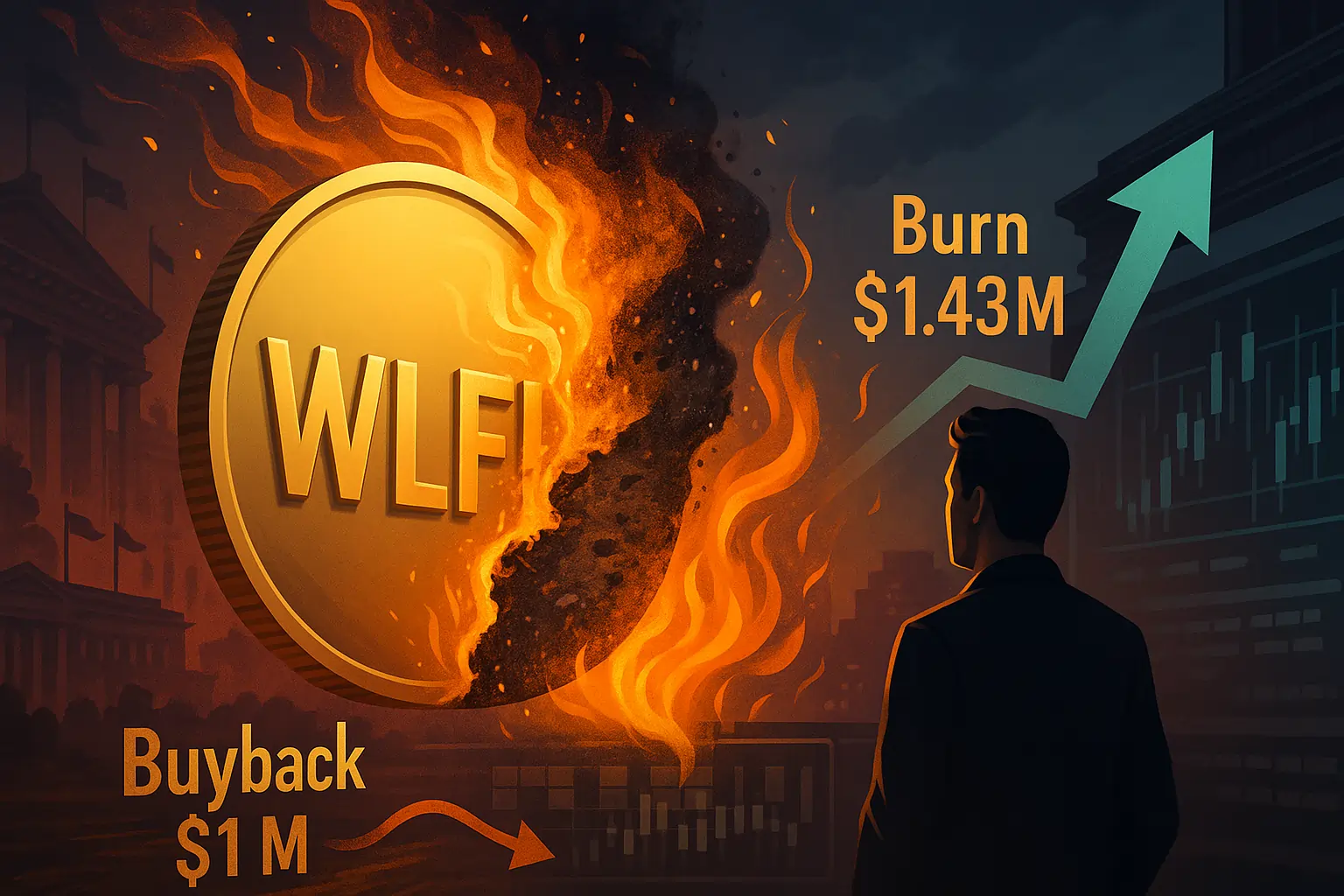What Just Happened with WLFI
In a dramatic tokenomic move, WLFI linked to Trump’s branding, has conducted a $1 million buyback followed by a $1.43 million token burn. The announcement came shortly after WLFI climbed in price, leading many to see this as an attempt to inject deflationary pressure and boost holder confidence. The burn was executed transparently on-chain, with the official WLFI channels confirming the amounts and process.
This “buyback and burn” action speaks to an evolving strategy: WLFI is not just trading on political narrative. It’s now deploying tokenomics mechanisms to influence supply and sentiment.
Why a Burn After a Buyback?
A buyback is when the project uses treasury or raised funds to repurchase tokens from the market. A burn is when those tokens are permanently removed from circulation. The combination compresses supply while signaling commitment.
Here’s how it works strategically:
The $1 million buyback buys WLFI at market prices, increasing demand.
The $1.43 million burn removes tokens from circulation, tightening supply further.
The hope: future holders face fewer tokens, potentially amplifying price gains, especially in markets sensitive to supply dynamics.
Burns also act as symbolic events, moments that can rally sentiment, reenergize communities, and attract speculative interest.
Comparing WLFI’s Move to Meme Token Playbooks
While buyback-and-burn has long been a staple in meme token strategy, WLFI’s political branding adds a twist. Many meme projects burn tokens to signal sincerity to their communities. WLFI’s burn signals that it’s trying to behave more like a protocol than a hype token, at least in appearance.
Unlike some meme tokens that hide burns or use unclear mechanisms, WLFI’s burn was done openly, with full on-chain visibility. That transparency strengthens credibility in markets that increasingly value verifiable mechanics.
Market Reaction and Holder Sentiment
Markets responded with intrigue. WLFI’s price ticked upward following the burn news, with increased trading volume in the hours after. Some holders cheered the move, seeing it as discipline and maturity. Others remain cautious, having seen tokenomic maneuvers before that failed to sustain.
Whale wallets that participated in the initial buyback faced mixed returns; some booked gains, while others may hold for deeper upside. Sentiment on forums shifted: thread topics turned from political affiliation to token economics.
Burns like these can create short-term excitement, but sustaining price depends on repeated demand and consistent narrative.
Risks, Ambiguities, and Goodwill
Burning tokens is as much symbolic as economic. If not backed by sustained demand, the effect may wear off. Also, tokenomics moves like burns can backfire if holders feel artificially manipulated.
Users will be watching for transparency in burn mechanisms, how tokens were acquired, whether they were freshly minted or held in treasury, and whether future burns are sustainable.
Because WLFI is politically linked, some skeptics will always see token burns as promotional tactics rather than real economic improvement. Trust remains fragile.
Broader Context: Tokenomics in Political Crypto
WLFI’s burn joins a growing trend: political tokens borrowing mechanisms from DeFi and meme cultures, utility layering, staking, and deflationary models. The fusion of political narrative and token design is made clearer by moves like burns and buybacks.
These tactics may get repeated by other politically affiliated tokens as creators look to balance symbolism with structural mechanics.
What to Watch Next
Will WLFI maintain buyback activity or establish preset burn schedules?
How will price behave in the days following the burn? Will momentum last?
Do holders see this as genuine improvement or token marketing?
Will governance, if any exists, get more visible or have more rules around tokenomics?
How do whales respond? Will they reaccumulate or exit?
Conclusion
The Trump-linked WLFI has made a bold move: a $1 million buyback followed by a $1.43 million burn. It’s a statement that tokenomics, even in politically charged assets, matter. While narrative will always play a role, supply compression via burn is a deeper tool than marketing alone.
Whether this becomes a blueprint for political crypto or a one-off spectacle remains to be seen. For now, WLFI blends messaging, economics, and symbolism and tests whether supply mechanics can sustain momentum beyond headline chatter.

